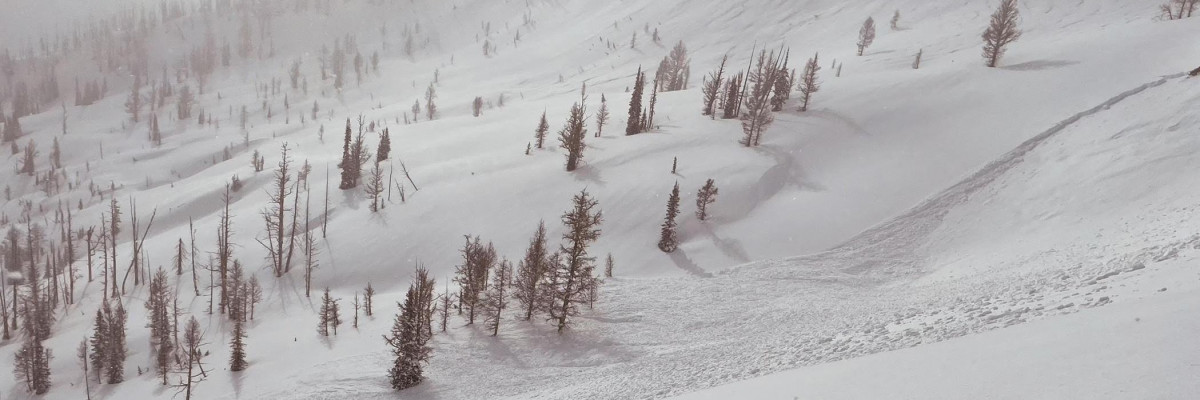The Avalanche Warning is terminated this morning.
The avalanche danger in the west central Montana backcountry is HIGH on leeward slopes and CONSIDERABLE on all other slopes. Dangerous avalanche conditions exist and travel in avalanche terrain is not recommended.
Good Morning. This is Jeff Carty with the West Central Montana Avalanche Center advisory on Monday, February 8th, 2021. This advisory does not apply to operating ski areas and expires at midnight tonight. The USDA Forest Service is solely responsible for its content.
Weather and snowpack
In the past week, the forecast area has received a massive amount of snow. 4.3” of SWE fell on the southern Missions, 3.1” in the Rattlesnake, 4.4″ in the central Bitterroot, and 2.8″ in the southern Bitterroot. This is a huge stress on the snow pack, translating to up to 4 feet of new snow, and it is still adjusting to the load. Of particular concern are faceted areas that were showing signs of weakness before the storm. Forecast area wide, mid elevations had well developed facets and depth hoar, as did the Rattlesnake at all elevations. These instabilities are now up to 6′ below the new snow and could produce very large destructive avalanches. In addition, near surface facets and facet/crust combo from January 13 underlie much of the new snow. These were collapsing and producing avalanches over the weekend under only part of the load we now have. More snow is expected today.
Winds have increased to moderate and are transporting ample new snow to leeward slopes and creating dangerous windslab that could be well over 6 feet thick in spots. Prior to the storm, cornices were already large and collapsing. Any that remain are unstable, unpredictable, and could trigger larger avalanches if they fall.
In the past 7 days, there have been 15 avalanche fatalities in the US, including one in the northern Swans on Saturday. This is the most avalanche deaths in a week since 1910. The snowpack throughout the western US is unstable and precarious. Don’t add to the numbers. Now is not the time to push into steep terrain. The snowpack needs time to settle out and bond.
The Bottom Line
Travel in avalanche terrain is not recommended, dangerous avalanche conditions exist. Avoid slopes over 30º and runout zones. You can trigger an avalanche remotely from the side, below, or above you. Natural avalanches are likely, human triggered avalanches in wind slab are certain.
Ski and ride safe.
























